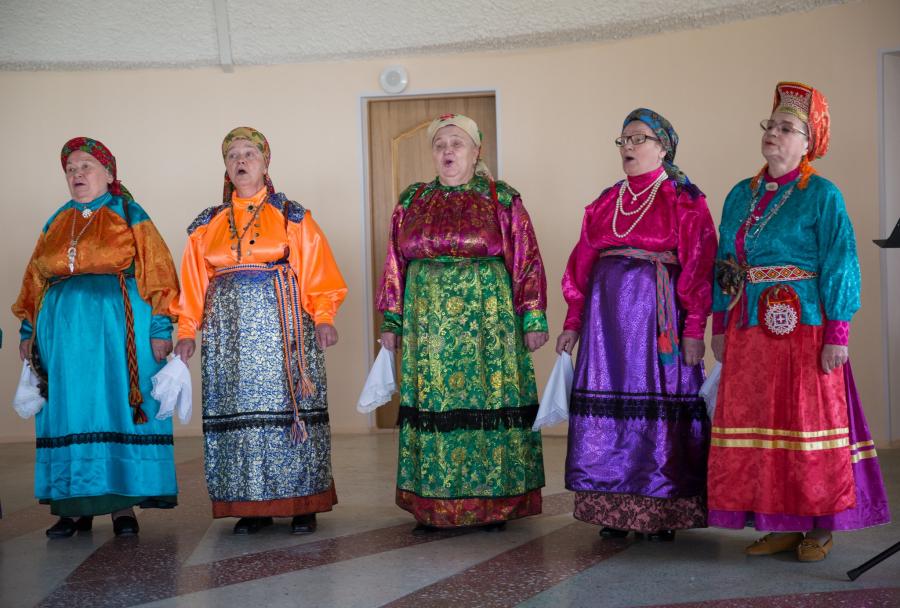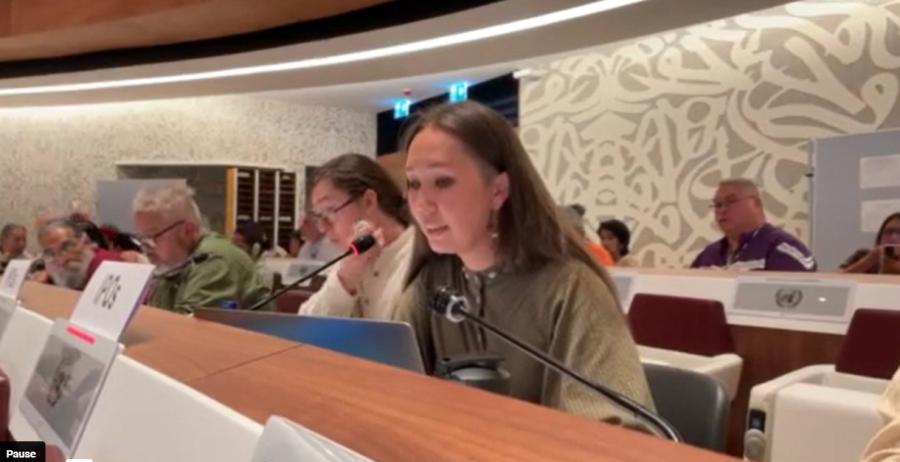In 1912, a Russian scholar, L.P. Semirenko, wrote that "even those people who have been in the Crimea for but a month know that the Crimea will perish after the resettlement of the Tatars. They alone survived in this dry steppe by mastering the secrets of extraction and irrigation and by raising livestock and growing gardens where neither Russian, nor German, nor Bulgarian could get along for long."
Semirenko's words were prophetic. In August 1944, Stalin ordered the complete resettlement of the Crimean Tatars. They were shipped to Central Asia like prisoners, bringing massive damage to the environment and economy of the Crimea. May formerly developed areas in the steppe and mountainous regions of the Crimea are even now deserted and degraded.
It was the people, of course, who suffered most of all. Of the 150,000 Crimean Tatars who were removed to Central Asia in 1944, one in five died before 1948. Most of the deportees were women, elders, and children; the men had been drafted to fight against German fascists and defend the state that was sending their wives and children into exile. Thousands of Crimean Tatars died at the front during World War II, yet those who survived couldn't return to their homes. In 1945 and 1946, they, too, were deported to Central Asia.
The slow return of the Crimean Tatars to their homeland began in 1967 immediately after the Soviet Union removed the accusation of complicity with the fascists during World War II. However, many administrative obstacles remained on the path homeward, and only 10 percent of Crimean Tatars came back before 1978. From 1979 to 1985, the tricklepractically dried up, as only a few dozen families could beat their way through the administrative cordons.
That many more Crimean Tatars wanted to return became clear in the middle of 1987. As a result of perestroika, more than 10 times the number of people returned between 1987 and 1990 than in the prior 20 years. Even so, their return has been far from easy. Just how hard became clear from a 1989 poll conducted by the Center for Ethnopolitical and Regional Research. Altogether, the center polled 3,113 people in the main regions where the Tatars live - Central Asia and Kazakhstan, Krasnodar Kray in Russia, Kherson Oblast of the Ukraine, and the Crimea.
THE KRYMLY
The Crimean Tatars call themselves Krymly, the inhabitants of the Crimea. The Krymly are different from other Tatars and speak Turkic languages that differ substantially from the language of the Tatars proper. Their name suggests the close connection to the Crimean peninsula. Here, between 1443 and 1783, a strong and prosperous state, the crimean Khanate, ruled most of the people making up the Crimean Tatars. After Russia conquered the Khanate, Catherine the Great gave away the larger and better parts of the region to her close advisors and friends, who soon seized all Tatar lands. This led to the first mass emigration of Crimean Tatars, beginning an exodus, mostly to Turkey, that continues today.
An important milestone in the history of the Crimean Tatars was the formation in 1921 of the Crimean Autonomous Republic, with Simferopol as its capital, as part of the Russian Federation. However, the Soviet Union abolished the Crimean Autonomous Republic in 1945, in its place creating a non-ethnic oblast that was, in turn, transferred to the Ukrainian Republic in 1954.
After a 1991 referendum, the Ukraine government re-established the Crimean Autonomous Republic, but the Crimean Tatars, who are less than a quarter of the population of the peninsula, didn't participate in the referendum and do not recognize the principles on which the republic was founded. Instead, at their own conference in June 1991, Crimean Tatars established a medzhlis (parliament) that would be "the highest plenipotentiary representative organ of the Crimean Tatar Nation." The delegates chose Mustapha Dzhamilev as chair of the Medzhlis.
The Ukrainian government has yet to recognize the authority of the Medzhlis. Still, the various governments of the Ukraine over the years made it possible to support and develop a Crimean Tatar national culture. Over 500 schools - including pedagogical, medical, fine arts, and musical colleges - with instruction in all subjects in the Crimean Tatar language are in operation. A center exists for studying the Crimean Tatar language and its literature, and the Crimean Tatar intelligentsia plays an important role in Crimean life.
According to the Soviet census, 271,100 Crimean Tatars lived in the Soviet Union in 1989, up from 179,100 in 1926. Leaders of the Crimean Tatar national movement estimate the national population to be at least a half million. The Center for Ethnopolitical and Regional Studies places the figure at roughly 360,000 to 400,000 Crimean Tatars.
THE DIFFICULT PATH HOME
Authorities in the Crimea were unprepared for the sharp shift in official policy that led to the return of large masses of people to the peninsula. They had been oriented to taking in rural people, but this people urbanized in the years after 1954 and understandably wished to live in large cities. According to our poll, city dwellers made up 62.1 percent of returnees, and 53.5 percent of Crimean Tatars wished to settle in cities. Yet only 26.6 percent had been able to resettle in the Crimea in cities. This meant something novel in post-war Soviet history: the deurbanization of an urban people.
Deurbanization is a major reason why the former city dwellers we polled experienced great difficulty in finding employment. Only 29 percent could get jobs in their fields, and fewer than 20 percent could get a job corresponding in its duties to their former employment. Among the intelligentsia - teachers, doctors, artists, and scientists - the situation is particularly serious. Over a third of Crimean Tatar doctors are unemployed.
Our study supports the sincerity of most returnees' contention that they moved to the peninsula solely out of a desire to return to their homeland, not to improve their material circumstances. The same was said by Crimean Tatars who still live outside the Crimea.
For 73 percent of the returnees, living conditions had actually worsened: the proportion of families earning less than 50 rubles per person per month grew 4.5 times. In addition, 4.3 percent of those polled had no homes of their own and lived with relatives. Besides this unsettled daily life, 56 percent of the Crimean Tatars polled hadn't been able to move their entire family to the Crimea all at once. Some of them had lived for up to a year and a half apart from their families while the wife and children, sometimes parents and infants, stayed behind.
Even so, more than 90 percent of Crimean Tatars wanted to return to the Crimea, and most of them were trying to return to the regions where their families had lived before deportation. Using the 1926 census - the last one that is reliable - we compared historical settlement patterns to the wishes of the returning Crimean Tatars. This comparison revealed that the hopes of the people neither completely matched nor completely contradicted historical settlement patterns. In 1926, 31.8 percent of the Crimean Tatars lived on the Crimean coast, and 32.8 percent of those polled wished to settle there. Some 18 percent had lived in the steppes and another 49.8 percent in the mountains, while 59.2 percent wanted to settle in those regions. Overall, demand for the more prosperous southern coastal land was smaller than might be expected, refuting the widespread supposition within the Crimea that the Crimean Tatars wanted to seize the best land under the pretext of returning to their homeland.
The differing preferences for particular regions of the Crimea to some extent depended on which segment of Crimean Tatars a person belonged. Those who had lived on the coast wished to resettle there, just as those who had lived in mountainous areas chose to return there. Naturally, the steppe settlers were less resistant than others to the decision of Crimean authorities to resettle most Crimean Tatars in the poorly developed, drier steppe areas.
Nevertheless, even most of this third group wished to settled in Simferopol and its environs. The share of those who wished to settle in this city from Central Asia was 3.3 times higher than the share of those who had lived there in 1926. This fact is easily explained: in their years of exile, formerly rural Crimean Tatars had become predominantly urban, as had the Soviet population as a whole.
It is harder to explain why Crimean authorities chose to limit entrance into Simferopol and close off some Crimean Tatars from the possibility of living on the coast. This dispute between the Crimean Tatars and local authorities is one source of ethnic conflict in the region. If the authorities wish to attract Crimean Tatars to the less-settled areas of the steppes, they should do so not by policies that limit crimean Tatars, but with economic incentives, such as tax breaks or assistance in obtaining and constructing homes.
In fact, it is necessary to establish a dialogue among the various ethnic groups living in the Crimea. Thus, it would make sense to extend such benefits to all the residents of the Crimea so not only Crimean Tatars but also other ethnic groups could choose to move to the sparsely populated steppes. This policy might help those already living in the Crimea feel that the arrival of the migrants improved, rather than worsened, living conditions.
THE CENTER FOR ETHNOPOLITICAL AND REGIONAL RESEARCH
Founded in July 1991, the center aims to create international and interdisciplinary groups of scholars to study ethnic issues in Eastern Europe and the former Soviet Union.
The center's primary areas of study are: * the peculiarities, situation, and prospects of socio-political development in post-totalitarian societies * the regional socio-political situation in the former Soviet republics, including such topics as political parties, political leaders, and national and religious movements * interethnic relations and conflicts * the demographic consequences of interethnic conflicts, ethnic migrations, and emigration * the settlement, culture, changing number, and involvement in internal conflicts of ethnic and religious minorities.
Center for Ethnopolitical and Regional Research, 1010000 Moscow/Myasnitaskaya 13 Tel: 921-72-76; Fax: 975-22-46 or 925-21-61.
Article copyright Cultural Survival, Inc.



